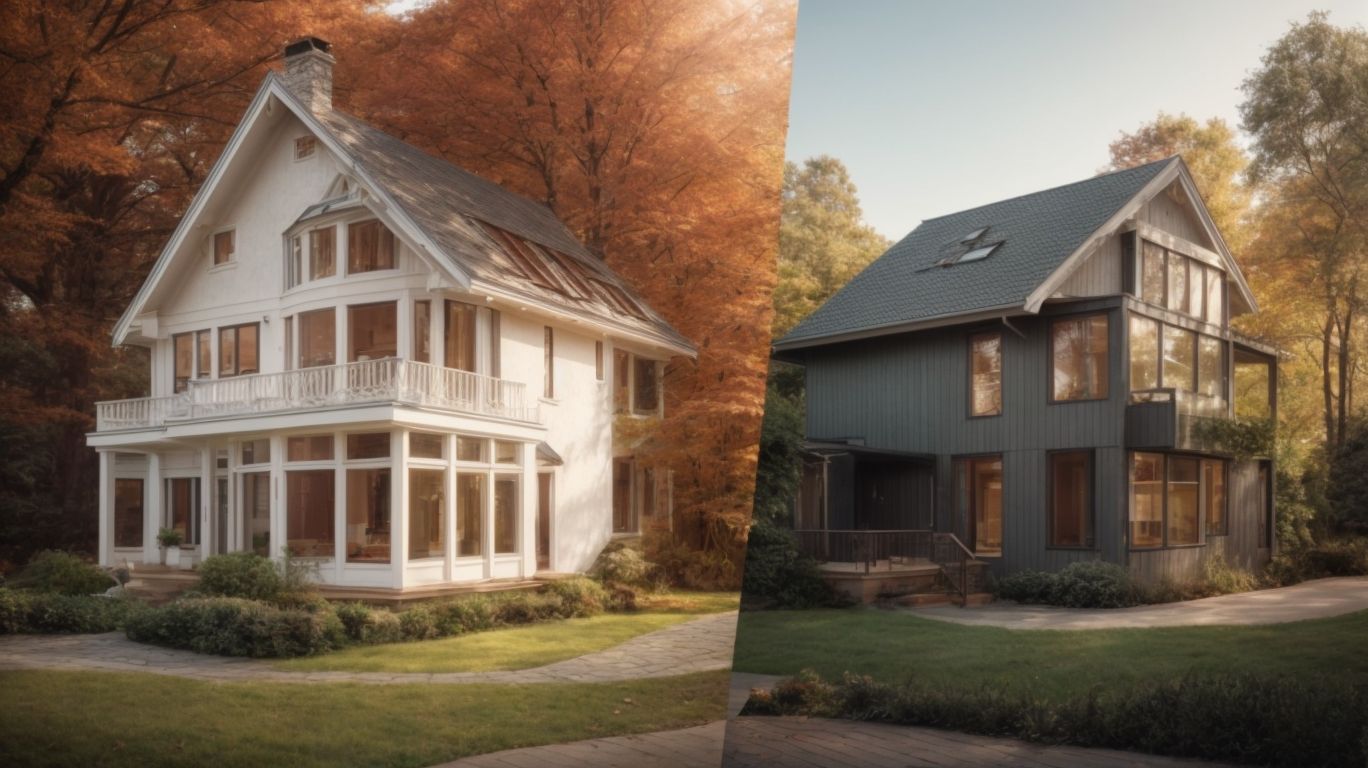
Long-Term Benefits and Savings from Retrofitting
Are you looking to save money on your energy bills while also reducing your environmental impact? Retrofitting may be the solution for you. In this article, we will explore the various types of retrofitting, why it is important, and the benefits it can offer.
From energy and cost savings to improved comfort and increased property value, retrofitting provides numerous long-term advantages. We will also discuss how you can retrofit your home or building, including the steps to take and the benefits of hiring a professional retrofitting company. If you’re interested in maximizing your savings and minimizing your environmental footprint, read on to learn more about the benefits and process of retrofitting.
What Is Retrofitting?
Retrofitting is the process of making long-term improvements and upgrades to existing buildings or homes to enhance their energy efficiency and sustainability.
What Are the Types of Retrofitting?
Retrofitting encompasses the integration of energy-efficient technologies and strategic retrofit projects to enhance building performance and operational efficiency.
This approach involves upgrading building systems, such as HVAC, lighting, and insulation, to reduce energy consumption and lower operating costs. For instance, a project may involve installing high-efficiency LED lighting or upgrading to smart HVAC controls.
By implementing these energy-efficient technologies, buildings can experience improved thermal comfort, reduced environmental impact, and increased overall value. Retrofitting can also include structural enhancements, such as implementing seismic upgrades or improving insulation to enhance the building’s resilience and reduce maintenance costs over time.
Why Is Retrofitting Important?
Retrofitting holds significant importance due to its cost-effective nature, positive environmental impact, and contribution to sustainable infrastructure.
What Are the Benefits of Retrofitting?
Retrofitting offers a multitude of benefits, including energy savings, reduced maintenance, and increased property value, making it a pivotal practice for sustainable improvements.
Retrofitting enables property owners to significantly lower energy consumption and reduce their carbon footprint by updating older systems and equipment. This results in cost savings and environmental benefits.
One of the main benefits of retrofitting is the installation of modern, low-maintenance fixtures and appliances. This reduces the need for frequent repairs and upkeep, improving the overall quality of life for occupants. Additionally, retrofitting can increase the overall property value, making it a wise investment for long-term sustainability.
Energy Savings
Retrofitting leads to significant energy savings through the implementation of energy efficiency improvements and strategic energy-efficient strategies, resulting in reduced energy consumption and operational costs.
This not only benefits the environment by reducing carbon emissions but also contributes to long-term cost savings for homeowners and businesses.
By upgrading to energy-efficient technologies such as LED lighting, high-efficiency HVAC systems, and smart thermostats, buildings can optimize their energy usage and minimize waste. Improved insulation and sealing techniques can enhance the building envelope, reducing energy loss and further lowering utility expenses.
Adopting renewable energy sources like solar panels or geothermal systems during retrofitting can also diversify and reduce the overall energy consumption of a building.
Cost Savings
Retrofitting presents substantial cost savings, driven by its cost-effective nature and the various advantages it offers, making it a financially rewarding investment.
This approach allows companies to upgrade their existing infrastructure without incurring the hefty costs associated with completely new installations.
Retrofitting often yields long-term savings through energy efficiency improvements, reduced maintenance expenses, and extended equipment lifespan. It ensures that businesses can modernize their facilities while keeping expenditures in check, thus contributing to overall financial stability and sustainability.
Improved Comfort and Health
Retrofitting contributes to improved comfort and health by implementing energy-efficient measures that enhance indoor environmental quality and promote occupant well-being.
This approach can include upgrading HVAC systems, installing advanced air filtration, and improving insulation to regulate temperature and air quality. By reducing energy wastage, these measures also lower environmental impact.
Optimizing lighting systems and implementing smart building technologies contribute to a healthier and more comfortable indoor environment, enhancing productivity and overall well-being for occupants. The integration of natural ventilation systems and green spaces fosters better air quality and reduces exposure to pollutants, ultimately improving the overall health and comfort within the indoor environment.
Increased Property Value
Retrofitting contributes to increased property value by leveraging energy efficiency incentives and fostering sustainable infrastructure, making it an attractive investment for property owners.
This approach not only reduces operational costs by making the property more energy-efficient but also enhances its overall appeal in the real estate market.
By integrating sustainable features such as solar panels, energy-saving appliances, and improved insulation, property owners can capitalize on various incentives and grants, improving the property’s market value.
Retrofitting to meet green building standards can also attract environmentally conscious buyers, further driving up the property’s desirability and financial worth.
What Are the Long-Term Savings from Retrofitting?
Retrofitting offers significant long-term savings in various forms, including lower energy bills, reduced maintenance and repair costs, and the application of lifecycle cost analysis to assess overall benefits.
Lower Energy Bills
Retrofitting results in lower energy bills through the implementation of energy-efficient solutions and the enhancement of building energy performance, leading to substantial cost savings over time.
This reduction in energy consumption not only benefits the environment by lowering the carbon footprint but also provides long-term financial advantages for homeowners and businesses.
Incorporating strategies such as improving insulation, upgrading HVAC systems, and utilizing energy-efficient lighting can significantly contribute to decreased energy usage and subsequently, lower utility bills. Retrofitting can also lead to increased comfort and productivity within the building, further adding to its overall value and appeal.
Reduced Maintenance and Repair Costs
Retrofitting leads to reduced maintenance and repair costs by incorporating energy-efficient materials and optimizing the building envelope, resulting in long-term financial benefits for property owners.
This approach not only enhances the overall sustainability of the building but also minimizes the need for frequent repairs and maintenance, thus decreasing the operational expenses.
Energy-efficient materials and advanced building envelope designs also contribute to improved insulation, reducing energy consumption and, consequently, lowering utility bills. The use of optimized building materials and technologies can extend the lifespan of various building components, further reducing the long-term maintenance costs.
This demonstrates that retrofitting plays a significant role in achieving cost-saving benefits while promoting environmental sustainability.
Longer Lifespan of Building Components
Retrofitting contributes to a longer lifespan of building components, especially through strategic HVAC upgrades and the integration of energy-efficient systems, ensuring sustained operational efficiency.
This modernization approach not only enhances the overall performance of the building but also reduces energy consumption and operational costs. By optimizing HVAC systems and incorporating energy-efficient technologies, buildings can significantly extend their lifespan while staying in line with environmental sustainability goals.
Retrofitting enables older structures to meet current building codes and regulations, ensuring safety and functionality for years to come. Implementing these upgrades also offers a competitive edge in the market, attracting tenants and investors who prioritize sustainable and efficient buildings.
Potential Tax Incentives
Retrofitting presents the potential for tax incentives by incorporating energy-efficient measures and designs, offering additional financial benefits for property owners and investors.
By integrating sustainable features such as LED lighting, high-efficiency HVAC systems, and improved insulation, property owners can qualify for various tax credits and rebates.
Implementing eco-friendly materials and renewable energy sources can further enhance the eligibility for incentives and contribute to long-term cost savings. These measures not only align with environmental sustainability goals but also create a more attractive and valuable property portfolio while supporting the overall reduction of carbon footprint.
How Can You Retrofit Your Home or Building?
Retrofitting your home or building involves critical steps such as conducting an energy audit, identifying areas for improvement, and engaging a professional retrofitting company to implement sustainable infrastructure.
Conduct an Energy Audit
Conducting an energy audit is the initial step in retrofitting, allowing for the identification of viable retrofitting solutions and the implementation of energy-efficient retrofits to improve building performance.
An energy audit provides valuable insights by assessing current energy usage and identifying areas of inefficiency. This information can guide the selection and implementation of retrofit measures, helping to prioritize energy-saving initiatives and optimize resource usage. This leads to long-term cost savings and environmental sustainability.
Conducting an energy audit also sets the foundation for developing a customized retrofitting plan. This plan is tailored to the specific needs and challenges of the building, ensuring that the implemented retrofits align with desired energy performance objectives.
Identify Areas for Improvement
Identifying areas for improvement is crucial in retrofitting, as it lays the foundation for implementing energy-efficient practices and designs to optimize building performance.
By pinpointing specific areas that require attention, such as outdated HVAC systems or inefficient insulation, organizations can strategically allocate resources to prioritize upgrades that yield the most significant energy savings.
This approach ensures that the retrofitting process is not only effective in reducing environmental impact but also financially beneficial in the long run, providing a compelling incentive for businesses and property owners to embrace sustainable building solutions.
Hire a Professional Retrofitting Company
Engaging a professional retrofitting company is essential for implementing energy-efficient systems and construction practices, ensuring the successful execution of retrofitting projects.
Their expertise and knowledge in energy-efficient solutions can result in significant cost savings, improved building performance, and a reduced environmental impact.
By utilizing advanced technologies and sustainable construction methods, these professionals can transform existing structures into high-performing, eco-friendly spaces.
Working with a reputable retrofitting company can provide access to valuable resources and industry connections, further enhancing the overall quality and effectiveness of the retrofitting process.
Their commitment to excellence and attention to detail ensures that the retrofitting project meets the highest standards of energy efficiency and sustainability.
Implement Energy-Efficient Practices
Implementing energy-efficient practices is a vital component of retrofitting, involving the integration of advanced energy-efficient technologies and the execution of targeted energy efficiency projects.
This approach not only reduces energy consumption but also enhances the overall sustainability of buildings and infrastructure.
By incorporating high-performance insulation, LED lighting, and smart building management systems, businesses and homeowners can significantly decrease their carbon footprint and operational costs.
The implementation of renewable energy sources such as solar panels and geothermal systems further strengthens the environmental impact and long-term energy savings.
Collaborating with energy efficiency experts and utilizing innovative building materials fosters a more resilient and eco-friendly built environment, benefitting occupants and the planet as a whole.




No Comments